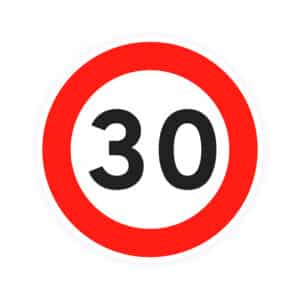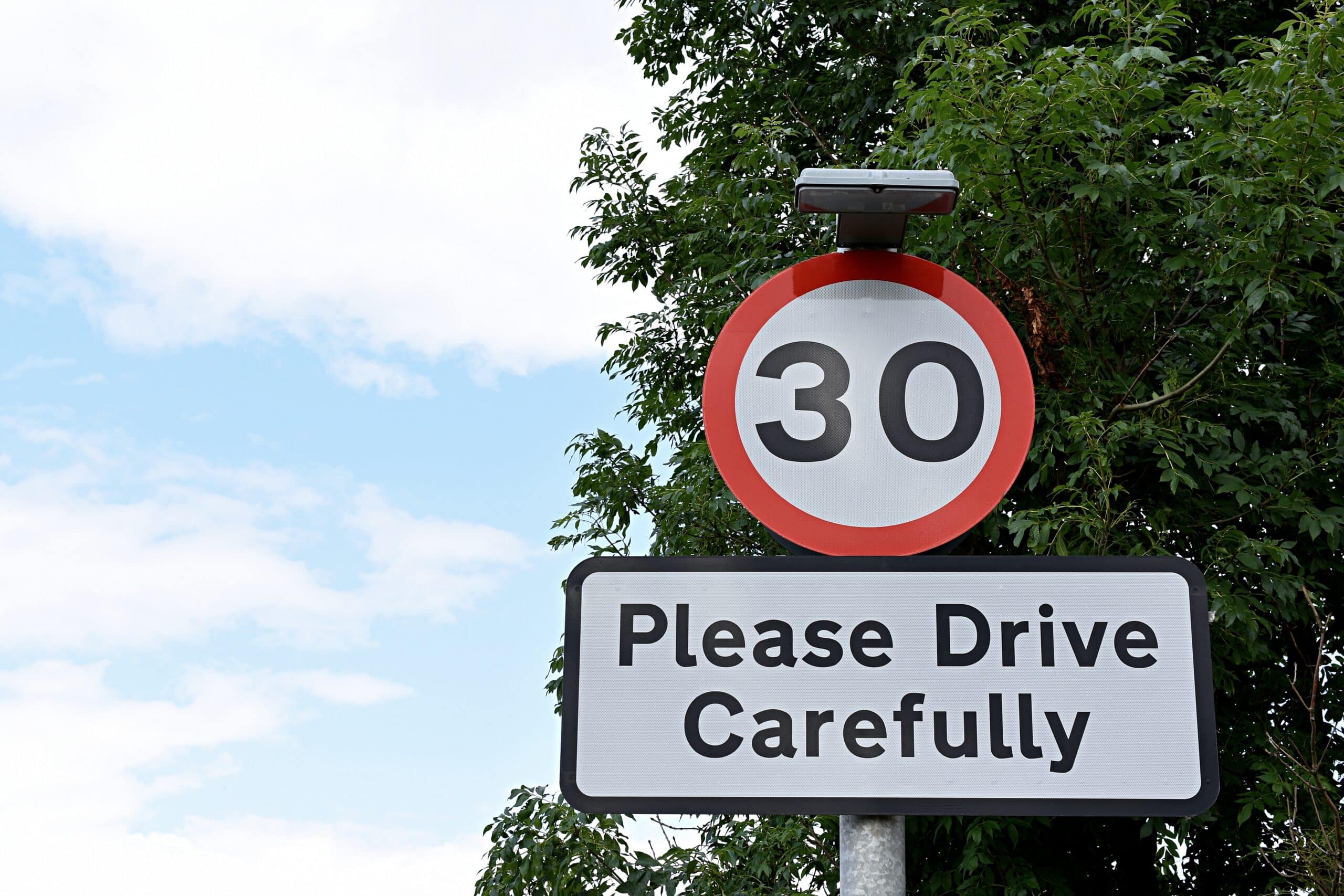Mastering Speed Limits in the UK: What Every Driver Should Know
Mastering Speed Limits in the UK: What Every Driver Should Know
Understanding speed limits is one of the most important aspects of safe and legal driving in the UK. As a driving instructor with more than two decades of experience, I can say confidently that most speeding offences aren’t intentional — they’re the result of drivers being unsure or unaware of the current speed limit. That’s why understanding speed limits is not just about obeying the law — it’s about developing good judgment and road awareness that keeps everyone safe.
In this guide, we’ll cover how to interpret road signs, road environments, and the clues around you that reveal the legal and safe speed on any road, whether you’re navigating a housing estate or cruising along the M6.
Understanding Speed Limit Signs
This is the most obvious—and most important—place to look. UK speed limit signs are circular, featuring a red border and a number in the centre (e.g. 20, 30, 40).

You won’t find repeaters on a 30 mph road with streetlights—that’s the rule: lit roads without repeaters typically indicate a 30 mph limit (unless you’re in Wales, where it’s now 20 mph on lit roads).
The “national speed limit” sign, a white circle with a black diagonal stripe, signifies the default limit for the type of road you’re on for cars and motorcycles:
Single carriageways: 60 mph
Dual carriageways and motorways: 70 mph
The “national speed limit” sign—a white circle with a black diagonal stripe—indicates the default limit for the type of vehicle that you’re driving:
Single carriageways: Vans and HGVs 50 mph *Except in Scotland
Dual carriageways: Vans and HGVs 60 mph *Except in Scotland
Motorways: Vans 70 mph and HGVs 60 mph *Except in Scotland
All of the above apply except when signs indicate a different speed limit.

Use the Road Environment as a Clue
Let’s say you’ve not seen a speed limit sign recently—now what? This is where environmental awareness becomes vital.
- Streetlights = 30 mph (or 20 in Wales). On lit roads in built-up areas, the default limit is 30 mph unless signed otherwise.
- No streetlights? You’re likely in a rural or national speed limit area—often 60 mph for single carriageways.
- Look at the road type:
- Is there a central reservation (a barrier or grass strip) between directions? That’s a dual carriageway, so the speed limit is 70 mph.
- No divider, just two-way traffic? Probably a single carriageway, NSL means 60 mph.
Also ask:
- Are there houses, pedestrians, parked cars, schools nearby? That suggests lower limits—20 or 30 mph.
- Is the road narrow, with sharp bends or high hedges? Even if it’s NSL, 60 mph might not be safe.
Watch for 20 mph Zones
These are becoming more common across the UK, especially in residential areas, near schools, and town centres.
- You’ll know you’re entering a 20 zone when you see a sign that says “20 Zone”—usually with traffic-calming features like humps or chicanes.
- Once inside a 20 zone, you won’t see repeaters, but the entire area is limited to 20 mph until you see a sign saying otherwise.
- High risk of pedestrians in the 20 mph zones can be in ‘ hidden’ spots, behind parked cars, in playgrounds or emerging from footpaths. It is essential to reduce risk and to keep everyone safe, that drivers choose to drive below the speed limit.
In Wales, 20 mph is now the default limit for built-up roads with street lighting—part of a new national policy to improve safety.
Recognising Limits on Smart Motorways
On smart motorways, such as parts of the M25 or M6, speed limits can change depending on traffic and conditions.
- Look for digital gantry signs above lanes—if the number has a red circle, that’s a mandatory speed limit.
- If the gantry is blank, the last posted limit still applies until you see a sign cancelling it (usually the national speed limit sign).
- Don’t ignore these—variable limits are enforced by speed cameras.

Tips for Reading the Speed Limit on any Road
Tips for Reading the Speed Limit on Any Road
Here are a few things I share with every driver, whether they’re 17 or 70:
- Always check for signs when entering a new road. That first 50 yards after a junction often tells you the speed limit.
- Use streetlights as a guide—lit roads with no signs indicate a speed limit of 30 mph (or 20 mph in Wales).
- Trust your instincts, but confirm with signs. If a road appears to be a 30, yet there’s a “40” sign, trust the sign.
- If unsure, assume the lower limit. You can always speed up later; it’s better to be under than over.
Final Thoughts from an ADI
Final Thoughts from an ADI
Speed limits aren’t merely a legal requirement, but they exist to align the road with its inherent risks. When you learn to read the signs and recognise the cues from the surroundings, guessing becomes unnecessary. It becomes instinctive.
So, the next time you’re driving and wondering, “What’s the limit here?”, look around; the answer is usually right in front of you. Drive safe—and stay sharp.
Enhance Your Skills
As an ADI or PDI, you know that professional growth doesn’t stop once you’re qualified. Whether you’re preparing for your next Standards Check, Part 3 or aiming to deliver more effective, modern tuition, our online and in-car development courses are here to support you. We offer targeted training to help you understand the ADI standards framework in depth, fine-tune your fault analysis, and enhance your client-centred instruction. With flexible learning options to fit around your diary, you can stay sharp, stay compliant, and stay ahead. For more information about how our training can help you be successful on your assessment, visit our Development Courses
